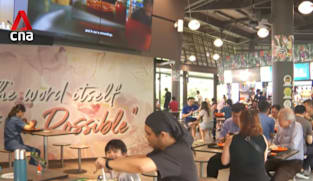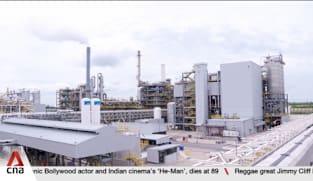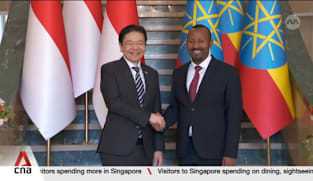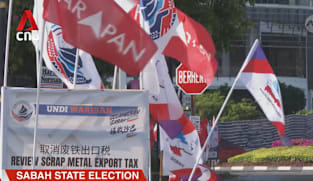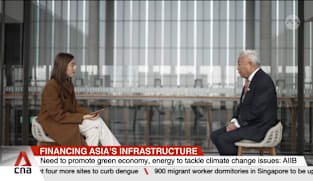Committee of Supply 2024 debate, Day 5: Chee Hong Tat on building a liveable city with better connectivity and convenience
Enhancing liveability, the living environment and livelihoods by putting people at the heart of what we do - this is a key area that the Ministry of Transport (MOT) is focusing on, said Transport Minister Chee Hong Tat. He told Parliament on Tuesday (Mar 5) that core to making Singapore more liveable through better connectivity and convenience is the car-lite strategy and making it more convenient for people to walk or cycle to nodes of transport. The rail network, as the “backbone” of the public transport system, has grown by 40 per cent over the past decade, he said. He noted that many residents are looking forward to the fourth stage of the Thomson-East Coast Line (TEL). He said the seven new TEL stations from Tanjong Rhu to Bayshore will improve connectivity and shorten travel times for residents in the east. Travelling from Marine Parade to Shenton Way will take 20 minutes, compared with about 40 minutes today. TEL Stage 4 is currently going through rigorous testing to ensure system resilience and reliability before commencing operations. It will open for passenger service on Jun 23 and commuters can enjoy free rides during the preview on Jun 21. Besides TEL, the North East Line (NEL) will be extended with the opening of Punggol Coast Station by the end of this year. This station will provide a new link for residents in Punggol North and enable convenient access to the Punggol Digital District and Singapore Institute of Technology Punggol Campus. Six new trains have been introduced, reducing wait times for commuters along the entire NEL. Hume Station on the Downtown Line (DTL) will open next year. “We will bring the MRT closer to more residents over the next few years but our task is not without challenges as many projects were delayed by the pandemic,” said Mr Chee. These include the TEL Stage 5 and DTL Stage 3 extension, which will link these two lines. “We have tried our best to catch up and to overcome the construction challenges of tunnelling in close proximity to existing critical infrastructure,” he said. In 2026, the stations of Bedok South, Sungei Bedok and Xilin will open. The Land Transport Authority will also close the loop of the Circle Line and open three new stations in 2026 – Keppel, Cantonment and Prince Edward, between the existing HarbourFront and Marina Bay stations. To facilitate integration works, one platform each at Telok Blangah and HarbourFront stations will be closed from January to May this year. “When we complete the full circle, commuters can enjoy more direct routes to the city centre,” said Mr Chee. Altogether, these expansion efforts up to 2026 will add 16 stations to the rail network. These will benefit 90,000 more households across the east, northeast and central areas, bringing Singapore closer to its target for eight in 10 households to be within a 10-minute walk of a train station by the 2030s. Mr Chee said besides connectivity, the rail network must continue to provide reliable service. Last year, major renewal works on the North-South and East-West lines were completed. The Bukit Panjang LRT is also undergoing a major renewal programme, which will be completed by 2026. Besides major renewal projects, a strong daily operations and maintenance regime is key to rail reliability, said Mr Chee. “Our next goal is to work closely with operators to achieve high reliability while keeping costs sustainable. This includes developing our workforce and improving productivity,” he said. Mr Chee told the House that rail operators have worked closely with the unions to train around 3,300 workers to pick up technical skills. Another 700 workers will undergo similar training this year. Building a future-ready rail workforce will remain a priority, said Mr Chee. From 2024 to 2028, the Government will provide a rail reliability and performance incentive to the operators to get them to keep up rail reliability standards, invest in workers and improve manpower productivity. Mr Chee also stressed the need to continue to balance evolving transport needs to serve more commuters while being financially prudent and keeping overall costs sustainable.
Enhancing liveability, the living environment and livelihoods by putting people at the heart of what we do - this is a key area that the Ministry of Transport (MOT) is focusing on, said Transport Minister Chee Hong Tat. He told Parliament on Tuesday (Mar 5) that core to making Singapore more liveable through better connectivity and convenience is the car-lite strategy and making it more convenient for people to walk or cycle to nodes of transport. The rail network, as the “backbone” of the public transport system, has grown by 40 per cent over the past decade, he said. He noted that many residents are looking forward to the fourth stage of the Thomson-East Coast Line (TEL). He said the seven new TEL stations from Tanjong Rhu to Bayshore will improve connectivity and shorten travel times for residents in the east. Travelling from Marine Parade to Shenton Way will take 20 minutes, compared with about 40 minutes today. TEL Stage 4 is currently going through rigorous testing to ensure system resilience and reliability before commencing operations. It will open for passenger service on Jun 23 and commuters can enjoy free rides during the preview on Jun 21. Besides TEL, the North East Line (NEL) will be extended with the opening of Punggol Coast Station by the end of this year. This station will provide a new link for residents in Punggol North and enable convenient access to the Punggol Digital District and Singapore Institute of Technology Punggol Campus. Six new trains have been introduced, reducing wait times for commuters along the entire NEL. Hume Station on the Downtown Line (DTL) will open next year. “We will bring the MRT closer to more residents over the next few years but our task is not without challenges as many projects were delayed by the pandemic,” said Mr Chee. These include the TEL Stage 5 and DTL Stage 3 extension, which will link these two lines. “We have tried our best to catch up and to overcome the construction challenges of tunnelling in close proximity to existing critical infrastructure,” he said. In 2026, the stations of Bedok South, Sungei Bedok and Xilin will open. The Land Transport Authority will also close the loop of the Circle Line and open three new stations in 2026 – Keppel, Cantonment and Prince Edward, between the existing HarbourFront and Marina Bay stations. To facilitate integration works, one platform each at Telok Blangah and HarbourFront stations will be closed from January to May this year. “When we complete the full circle, commuters can enjoy more direct routes to the city centre,” said Mr Chee. Altogether, these expansion efforts up to 2026 will add 16 stations to the rail network. These will benefit 90,000 more households across the east, northeast and central areas, bringing Singapore closer to its target for eight in 10 households to be within a 10-minute walk of a train station by the 2030s. Mr Chee said besides connectivity, the rail network must continue to provide reliable service. Last year, major renewal works on the North-South and East-West lines were completed. The Bukit Panjang LRT is also undergoing a major renewal programme, which will be completed by 2026. Besides major renewal projects, a strong daily operations and maintenance regime is key to rail reliability, said Mr Chee. “Our next goal is to work closely with operators to achieve high reliability while keeping costs sustainable. This includes developing our workforce and improving productivity,” he said. Mr Chee told the House that rail operators have worked closely with the unions to train around 3,300 workers to pick up technical skills. Another 700 workers will undergo similar training this year. Building a future-ready rail workforce will remain a priority, said Mr Chee. From 2024 to 2028, the Government will provide a rail reliability and performance incentive to the operators to get them to keep up rail reliability standards, invest in workers and improve manpower productivity. Mr Chee also stressed the need to continue to balance evolving transport needs to serve more commuters while being financially prudent and keeping overall costs sustainable.








